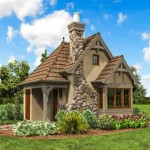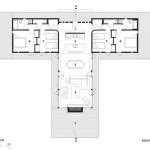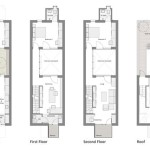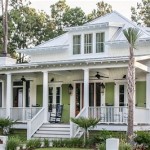Pole frame house plans are technical documents that provide detailed instructions and specifications for constructing a pole frame house. These plans typically include floor plans, elevations, structural details, and material lists. They serve as a blueprint for builders to follow when erecting the house.
Pole frame construction is a popular building method for residential and agricultural buildings. It involves using pressure-treated wooden poles as the primary structural supports for the house. The poles are typically embedded in concrete footings and spaced evenly along the perimeter and interior of the building. The walls are then framed using conventional wood framing techniques, and the roof is typically supported by trusses or rafters.
Let’s explore the key elements of pole frame house plans and how they guide the construction process.
Here are 10 important points about pole frame house plans:
- Define structural components
- Specify materials and dimensions
- Provide floor plans and elevations
- Include roof framing details
- Show electrical and plumbing layouts
- Detail foundation and footing requirements
- Comply with building codes
- Consider energy efficiency
- Accommodate specific design features
- Provide a clear construction guide
These plans are essential for ensuring the structural integrity, functionality, and aesthetic appeal of pole frame houses.
Define structural components
Pole frame house plans provide detailed specifications for the structural components of the house, including the poles, beams, girders, trusses, and rafters. These components work together to create a strong and durable framework for the building.
Poles: The poles are the primary vertical supports of the house. They are typically made of pressure-treated wood and are embedded in concrete footings. The poles are spaced evenly along the perimeter and interior of the building, and they support the beams and girders.
Beams: The beams are horizontal members that span between the poles. They support the floor joists and the roof trusses or rafters.
Girders: The girders are larger beams that support the main beams. They are typically used in larger buildings or in areas where there is a heavy load.
In addition to these main structural components, pole frame house plans also specify the materials and dimensions of other structural elements, such as:
Specify materials and dimensions
Pole frame house plans specify the materials and dimensions of all structural components, including the poles, beams, girders, trusses, and rafters. This information is crucial for ensuring the structural integrity and durability of the building.
- Poles: The plans will specify the type of wood to be used for the poles, as well as the diameter and length of each pole. The diameter of the poles will depend on the size of the building and the loads that they will be supporting.
- Beams: The plans will also specify the type of wood to be used for the beams, as well as the dimensions of each beam. The dimensions of the beams will depend on the span between the poles and the loads that they will be supporting.
- Girders: The plans will specify the type of wood to be used for the girders, as well as the dimensions of each girder. The dimensions of the girders will depend on the span between the beams and the loads that they will be supporting.
- Trusses and rafters: The plans will specify the type of wood to be used for the trusses and rafters, as well as the dimensions of each truss and rafter. The dimensions of the trusses and rafters will depend on the span of the roof and the loads that they will be supporting.
In addition to the main structural components, the plans will also specify the materials and dimensions of other structural elements, such as:
- Floor joists
- Roof sheathing
- Siding
- Windows and doors
This information is essential for ensuring that the building is properly constructed and meets all applicable building codes.
Provide floor plans and elevations
Pole frame house plans also include floor plans and elevations. Floor plans show the layout of the house from above, indicating the location of rooms, walls, doors, and windows. Elevations show the exterior of the house from different sides, indicating the height and shape of the building.
- Floor plans: Floor plans are essential for planning the layout of the house and for ensuring that all of the rooms are properly sized and proportioned. They also show the location of doors and windows, as well as the flow of traffic through the house.
- Elevations: Elevations are important for visualizing the exterior of the house and for ensuring that the building is aesthetically pleasing. They also show the height of the building and the pitch of the roof.
Floor plans and elevations are two of the most important components of pole frame house plans. They provide a clear and concise overview of the house’s design and layout, and they are essential for obtaining building permits and for guiding the construction process.
Include roof framing details
Pole frame house plans include detailed specifications for the roof framing, including the type of trusses or rafters to be used, the spacing of the trusses or rafters, and the type of roof sheathing to be installed.
Trusses and rafters: Trusses are pre-fabricated roof components that are typically used in larger buildings or in areas where there is a complex roof design. Rafters are individual roof members that are installed on a slope to support the roof sheathing. The plans will specify the type of wood to be used for the trusses or rafters, as well as the dimensions and spacing of each truss or rafter. The spacing of the trusses or rafters will depend on the span of the roof and the loads that they will be supporting.
Roof sheathing: Roof sheathing is the material that is installed over the trusses or rafters to provide a base for the roofing material. The plans will specify the type of roof sheathing to be used, as well as the thickness and spacing of the sheathing. The thickness and spacing of the sheathing will depend on the type of roofing material that will be installed.
Roofing materials: The plans will also specify the type of roofing material to be installed, such as shingles, metal roofing, or tile. The type of roofing material will depend on the climate and the desired aesthetic of the building.
In addition to the main roof framing components, the plans will also specify the materials and dimensions of other roof framing elements, such as:
- Fascia
- Soffit
- Gutters
- Downspouts
This information is essential for ensuring that the roof is properly constructed and meets all applicable building codes.
Show electrical and plumbing layouts
Pole frame house plans also include electrical and plumbing layouts. These layouts show the location of all electrical outlets, switches, and light fixtures, as well as the location of all plumbing fixtures, pipes, and drains.
- Electrical layouts: The electrical layout shows the location of all electrical outlets, switches, and light fixtures. It also shows the location of the electrical panel and the main electrical service entrance. The electrical layout is essential for ensuring that the house has adequate electrical power and that all electrical devices are properly grounded.
- Plumbing layouts: The plumbing layout shows the location of all plumbing fixtures, pipes, and drains. It also shows the location of the water heater and the main water supply entrance. The plumbing layout is essential for ensuring that the house has adequate water supply and drainage, and that all plumbing fixtures are properly installed.
Electrical and plumbing layouts are an essential part of pole frame house plans. They provide a clear and concise overview of the electrical and plumbing systems in the house, and they are essential for obtaining building permits and for guiding the construction process.
Detail foundation and footing requirements
Pole frame house plans provide detailed specifications for the foundation and footing requirements of the house. This information is crucial for ensuring that the house is properly supported and that it can withstand the loads that it will be subjected to.
Foundation type: The plans will specify the type of foundation that is required for the house. The most common type of foundation for pole frame houses is a concrete slab foundation. Slab foundations are relatively easy to construct and they are suitable for most soil conditions. However, in areas with poor soil conditions or in areas where there is a high water table, a different type of foundation may be required, such as a pier and beam foundation or a crawl space foundation.
Footing size and depth: The plans will also specify the size and depth of the footings that are required for the house. The size and depth of the footings will depend on the type of foundation that is being used and the loads that the footings will be supporting. In general, the footings should be at least 12 inches wide and 18 inches deep.
Footing reinforcement: The plans will also specify the type and amount of reinforcement that is required for the footings. Reinforcement is typically made of steel rebar, and it is used to strengthen the footings and prevent them from cracking.
In addition to the main foundation and footing requirements, the plans will also specify the materials and dimensions of other foundation elements, such as:
- Concrete mix design
- Vapor barrier
- Insulation
- Drainage system
This information is essential for ensuring that the foundation is properly constructed and meets all applicable building codes.
Comply with building codes
Pole frame house plans must comply with all applicable building codes. Building codes are regulations that govern the construction of buildings to ensure that they are safe and habitable. Building codes vary from place to place, so it is important to check with the local building department to determine which codes apply to your project.
- Structural safety: Building codes include requirements for the structural safety of buildings. These requirements ensure that buildings can withstand the loads that they will be subjected to, such as wind, snow, and earthquakes. Pole frame house plans must be designed to meet these requirements.
- Fire safety: Building codes also include requirements for fire safety. These requirements ensure that buildings are constructed in a way that minimizes the risk of fire and that people can safely evacuate the building in the event of a fire. Pole frame house plans must be designed to meet these requirements.
- Energy efficiency: Building codes also include requirements for energy efficiency. These requirements ensure that buildings are constructed in a way that minimizes energy consumption. Pole frame house plans must be designed to meet these requirements.
- Accessibility: Building codes also include requirements for accessibility. These requirements ensure that buildings are accessible to people with disabilities. Pole frame house plans must be designed to meet these requirements.
Complying with building codes is essential for ensuring that pole frame houses are safe, habitable, and energy-efficient. It is also important for obtaining building permits and for avoiding costly delays during the construction process.
Consider energy efficiency
Pole frame house plans should consider energy efficiency to reduce energy consumption and lower utility bills. This can be achieved through various measures, including:
Insulation: Insulation is a key factor in energy efficiency. Pole frame houses can be insulated in a variety of ways, including using batt insulation, spray foam insulation, or cellulose insulation. The type of insulation used will depend on the climate and the desired level of energy efficiency.
Windows and doors: Windows and doors are another important factor in energy efficiency. Energy-efficient windows and doors are designed to minimize heat loss and gain. Look for windows and doors with a high Energy Star rating.
Air sealing: Air sealing is the process of sealing any gaps or cracks in the building envelope to prevent air leakage. This can be done using a variety of methods, such as caulk, weatherstripping, and gaskets.
HVAC system: The HVAC system is responsible for heating and cooling the house. An energy-efficient HVAC system can significantly reduce energy consumption. Look for an HVAC system with a high SEER (Seasonal Energy Efficiency Ratio) or HSPF (Heating Seasonal Performance Factor) rating.
By considering energy efficiency in the design of pole frame house plans, homeowners can build homes that are more comfortable, less expensive to operate, and better for the environment.
Accommodate specific design features
Pole frame house plans can be customized to accommodate a wide range of specific design features, such as:
- Unique rooflines: Pole frame construction allows for the creation of unique and complex rooflines, such as vaulted ceilings, gambrel roofs, and hip roofs. These rooflines can add architectural interest to the home and create a more spacious and open interior.
- Open floor plans: Pole frame construction can be used to create open floor plans with fewer interior walls. This can make the home feel more spacious and allow for more flexibility in furniture placement.
- Large windows and doors: Pole frame construction allows for the installation of large windows and doors, which can provide ample natural light and ventilation. This can create a more inviting and comfortable living environment.
- Custom exterior finishes: Pole frame houses can be finished with a variety of exterior materials, such as wood siding, stone, or stucco. This allows homeowners to create a home that matches their personal style and the surrounding environment.
By accommodating specific design features, pole frame house plans can be used to create homes that are both beautiful and functional. The flexibility of pole frame construction makes it an ideal choice for homeowners who want to build a custom home that meets their unique needs.
Provide a clear construction guide
Pole frame house plans should provide a clear and concise construction guide that outlines the steps involved in building the house. This guide should include detailed instructions and illustrations for all aspects of the construction process, from the foundation to the roof.
- Materials list: The construction guide should include a complete list of all materials that will be needed to build the house. This list should include the quantities, dimensions, and specifications for all materials, such as lumber, concrete, roofing, and siding.
- Step-by-step instructions: The construction guide should provide step-by-step instructions for each phase of the construction process. These instructions should be clear and easy to follow, and they should be accompanied by detailed illustrations.
- Building codes: The construction guide should include information on all applicable building codes and how to comply with them. This information should include references to specific building codes and how they apply to the construction of the house.
- Safety precautions: The construction guide should include information on all safety precautions that should be taken during the construction process. This information should include tips on how to avoid accidents and injuries.
A clear and concise construction guide is essential for ensuring that the pole frame house is built correctly and safely. By following the instructions in the construction guide, homeowners can avoid costly mistakes and ensure that their home is built to last.










Related Posts








